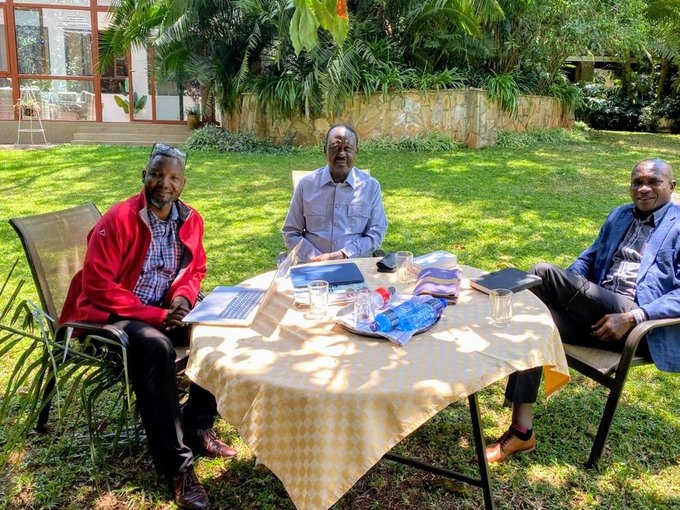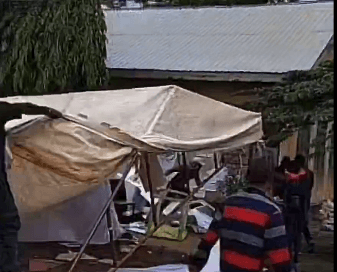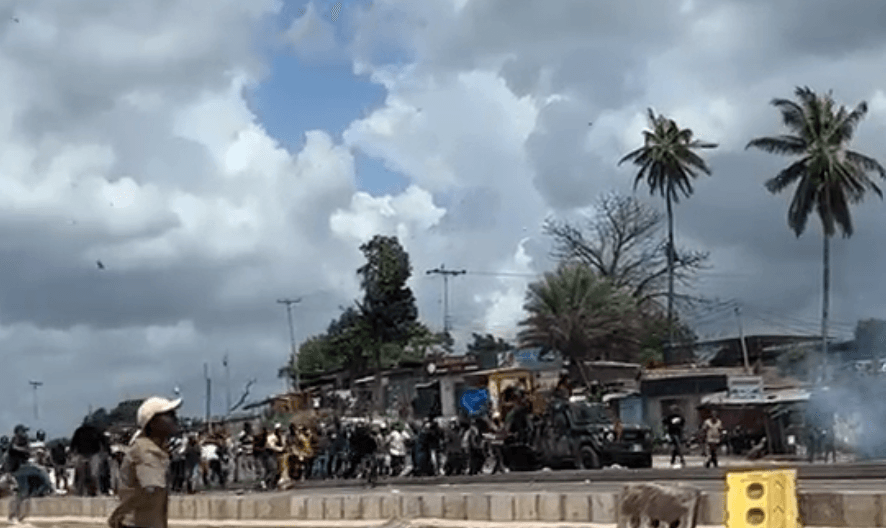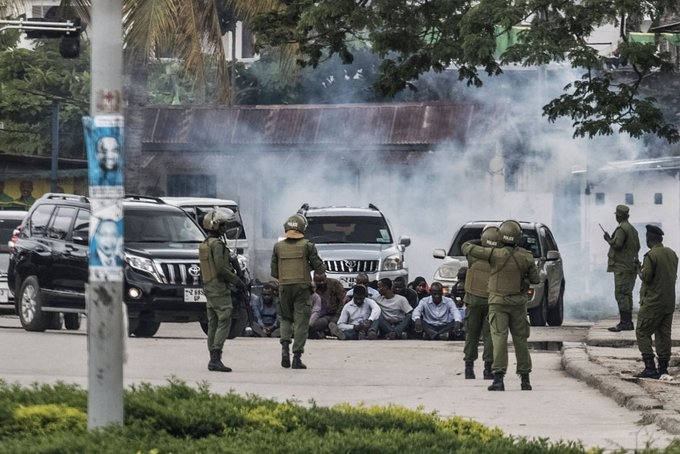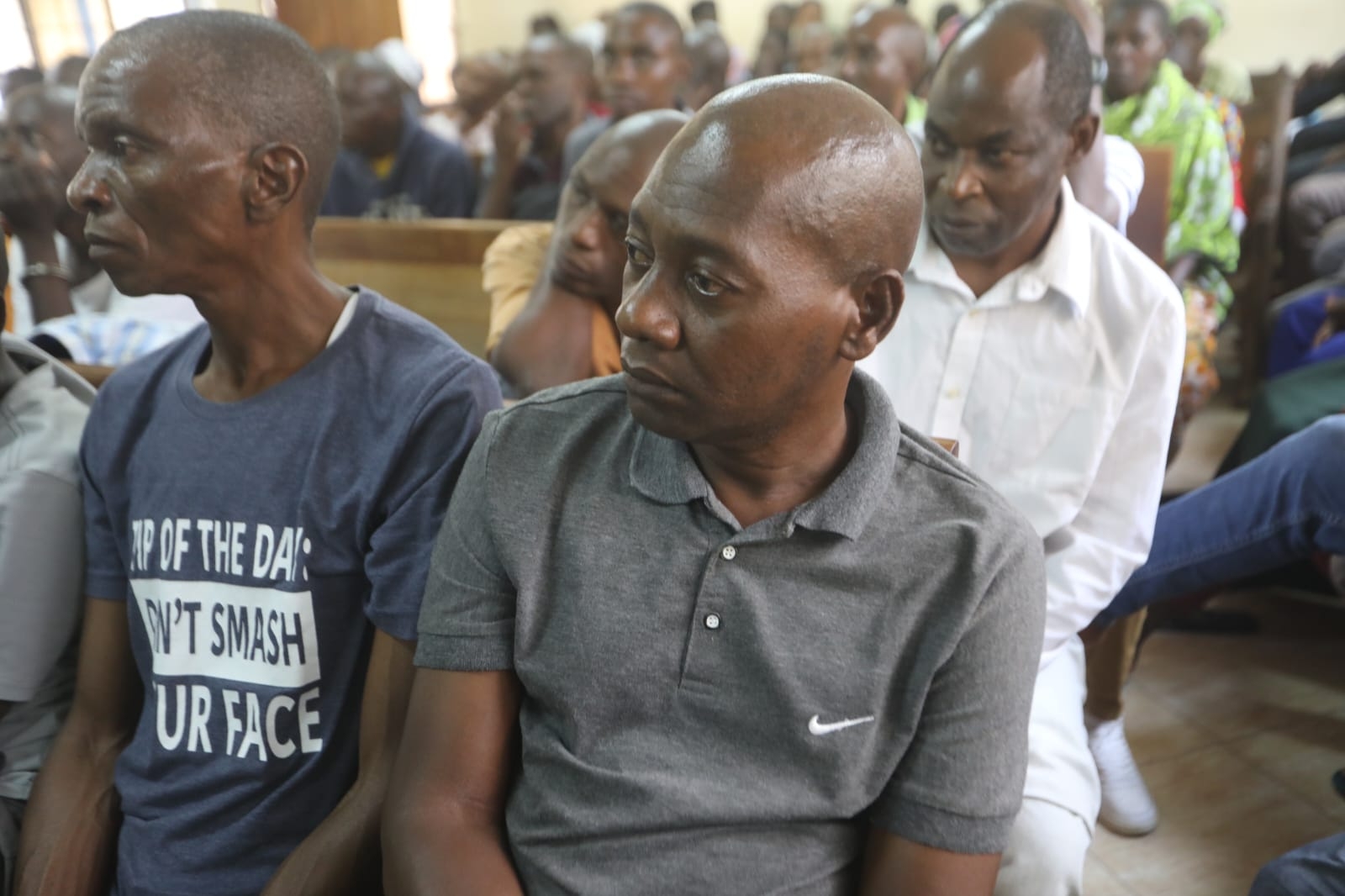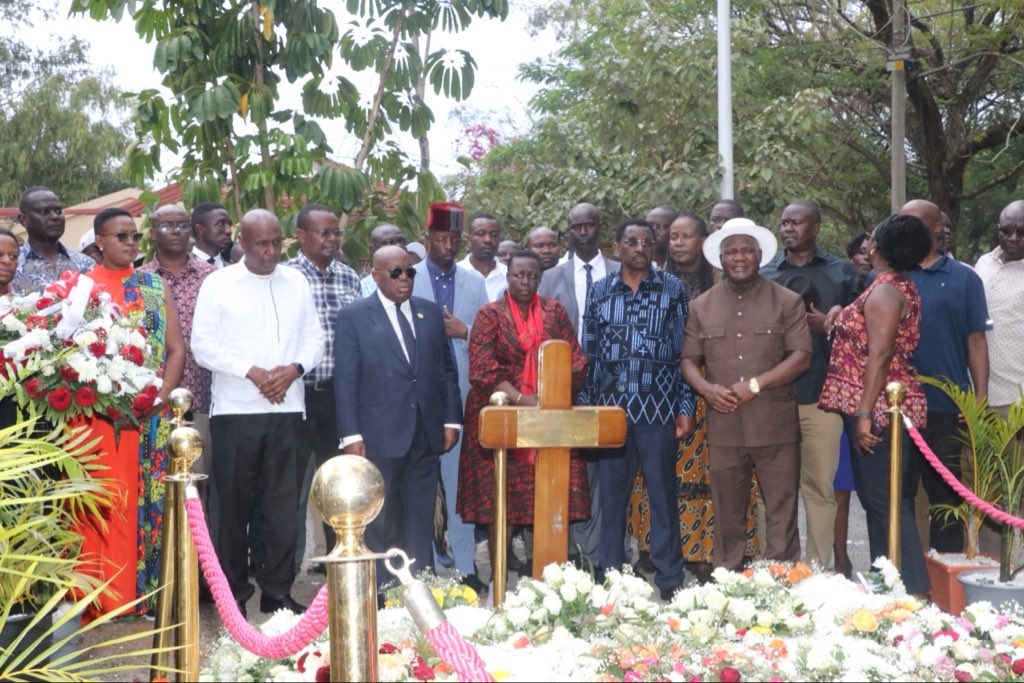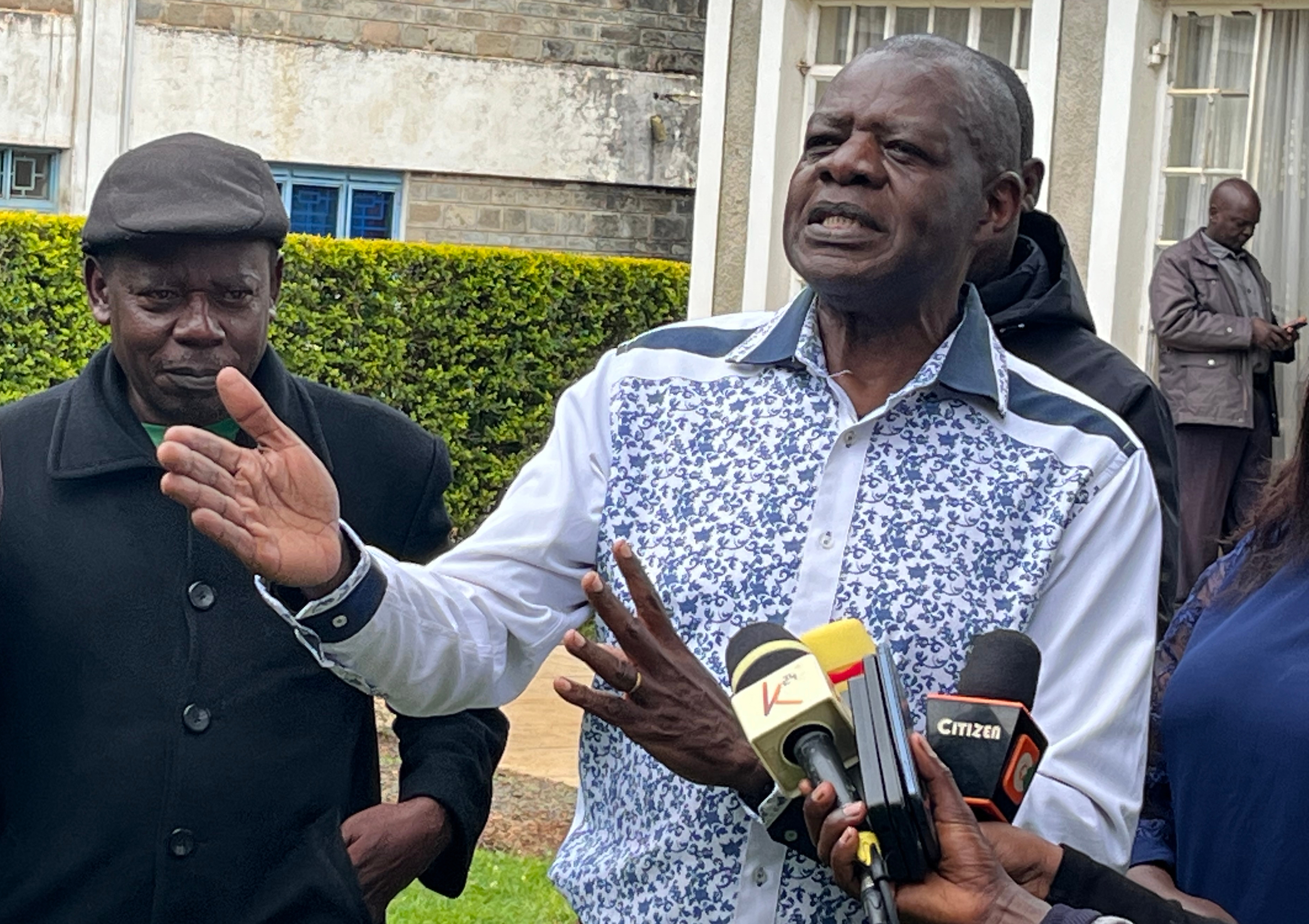For the past two weeks, residents of Itunduimuni, a township in Machakos county, have been saying silent prayers for one of their own after the news of the kidnapping of a Kenyan driver in the Democratic Republic of Congo.
Wanza Munyao, 45-year-old female truck driver was reported to have been kidnapped on August 27 and was being held by the Democratic Forces for the Liberation of Rwanda (FDLR), an armed rebel group active in the eastern Democratic Republic of the Congo.
Led by local leaders, residents have been making desperate calls to the government to intervene and secure her release.
“I am asking Prime Cabinet Secretary Musalia Mudavadi who also serves as the Cabinet Secretary for Foreign Affairs, to urgently secure the release of Grace Wanza Munyao,” former UDA chairman and Parliamentary Service Commissioner, Johnson Muthama, said.
According to a statement from Alliance Fleuve Congo (AFC), a politico-military movement operating in Eastern DRC, Munyao was abducted at Kiseguro at 12 pm within the Binza grouping.
“AFC draws the attention of both the National and International Community to the ongoing violations of the ceasefire by the coalition forces of the Kinshasa regime, mainly the FARDC, FDLR, Mercenaries, Mai-Mai/Wazalendo Militias, the National Defense Forces of Burundi, SADC Forces and MONUSCO,” the statement reads in part.
AFC is associated with several non-governmental armed groups, including the March 23 Movement/Congolese Revolutionary Army (M23/ARC).
Diaspora Affairs Principal Secretary Roseline Njogu last week said the government was working to ensure her release.
“We are well seized and appropriate action is being taken,” she said.
Cases of truck drivers being abducted or even killed with trucks being set on fire in DR Congo are however not new.
In October last year, two truck drivers, a Kenyan and a Congolese, were shot dead by Islamic State-affiliated Allied Democratic Forces (ADF) at a car park in Kasindi, Beni territory, with rebels continuing to spread terror in the country, which officially joined the East African Community in July 2022, giving hope to a new era that would see improved security and growth in regional trade.
According to the Kenya Long Distance Truck Drivers Association (LDTDA) whose members deliver cargo to the DRC from the Port of Mombasa, setting off the 1,985 kilometres journey to Congo has always been dreadful as drivers are unsure of their return owing to insecurity.
LDTDA Secretary-General Nicholas Mbugua, who is now a retired driver explained: “Gong to DRC is no joke because coming back is not guaranteed. You go knowing the risks, if you come back, it is fine.”
According to Mbugua, DRC government has not been responsive whenever such incidences occur, leaving drivers at the mercy of their abductors.
For trucks and cargo owners, all they care about is the cargo being delivered, Mbugua added.
“Nobody cares, if a truck is burnt down, the owners get paid by insurance. We have had cases where some drivers are killed and buried there,” Mbugua said.
He said the association advices drivers to boycott DRC and instead, drop all cargoes at the borders for onward delivery by Congolese drivers.
“Let the Congolese national deal with their own people. That will make things easier because foreigners end up being targeted a lot. Meanwhile, the Kenyan government should intervene and talk to the DRC government to ensure security for drivers,” said Mbugua.
In 2022, Kenya Defence Forces troops were sent to eastern Democratic Republic of Congo under the East Africa Community Regional Forces (EACRF) to help bring order. The troops have since exited.
Poor roads
Poor roads have also been a nightmare for drivers, which are further blamed for slowing them down, exposing them to risks.
About 63 years after independence, the second largest country in Africa sprawling over 905,000 square miles still has few roads connecting one end of the country to the other.
Heavy rainfall in the country also makes it almost impossible to use the existing untarmacked road network, with drivers taking up to six months to make a return-trip between Mombasa and DRC.
Last year December, I did a trip to Kinshasa. I was coming back home this year March. Sme drivers who went deep into remote regions were making it back in June,” *Saidi, a driver with a leading transporter in Kenya told the Star.
According to the association’s chairman Kabeberi Hassan, the situation in DRC is “a year-in-year out” thing, which exposes drivers to security risks, mental torture and high costs, with little help going the drivers’ way.
“They can only get lucky when the Chinese doing projects in the country go to rescue their stuck vehicles. That is the only chance to get pulled out with the caterpillars,” Hassan noted, “Going into DRC has become a headache where drivers don’t know when they well be back home.”
The long turnaround time also comes with a major implication on operating costs for transporters, with the Port of Mombasa being a major facility serving the EAC through the Northern Corridor.
The 1,700 kilometre-long corridor that runs between Mombasa (Kenya), Uganda Rwanda, Burundi and Eastern DRC, remains the busiest and most preferred route connecting the landlocked countries to the maritime transport in global trade.
According to transporters, it costs at least $247 (about Sh30, 962-current exchange rate) per truck, per day, when it remains stuck on the roads.
Over 1,500 trucks were stuck over the December 2023-January 2024 period, meaning transporters were incurring costs of about Sh46.4 million per day. This translates to about Sh1.4 billion per month.
Kenya Transporters Association (KTA) and the Shippers Council of Eastern Africa (SCEA) have both raised concerns over the situation in DRC, calling for a solution.
They want the road network improved, failure to which, transporters would avoid the landlocked country, a move that will hurt trade.
"These poor road conditions lead to delayed cargo deliveries and result in losses for many transporters,” KTA chief executive Mercy Ireri said.
The delays have also exposed importers and traders to demurrage charges on delayed return of containers, shippers said.
Demurrage refers to the charge that the merchant pays for the use of the container beyond the free time period, currently averaging $70 (about Sh9,030) per day, per container, but varies on the shipping line.
The Shippers Council has called on the EAC leaders to improve the infrastructure to improve trade in the region, terming the situation in DRC “unfortunate.”
“The AfCFTA leadership must also prioritise infrastructure improvement to aid the objectives of the agreement. It is estimated that USD247, 000 is directly lost per day not forgetting the hardship and pain the truck drivers face,” SCEA said.
DRC is the third biggest transit destination for cargoes coming in through the Port of Mombasa, accounting for 7.2 per cent of total volumes, according to Kenya Ports Authority.
Uganda leads with an 83.2 per cent share followed by South Sudan with 9.9 per cent, while Tanzania and Rwanda account for 3.2 per cent and 2.4 per cent, respectively.
Poor infrastructure in DRC is seen as a setback to trade, where Kenya and other regional markets are keen to tap into the 81 million people market, under the EAC common market protocol.
Top EAC exports to DRC include lime and cement, iron and steel, tobacco, beverages, spirits and vinegar, animal or vegetable fats and oils, wheat gluten, sugars and confectionery, plastics and soap, among other products.
Imports include wood, plants, seeds, fruits, re-melting scraps of iron or steel, and natural sands.


